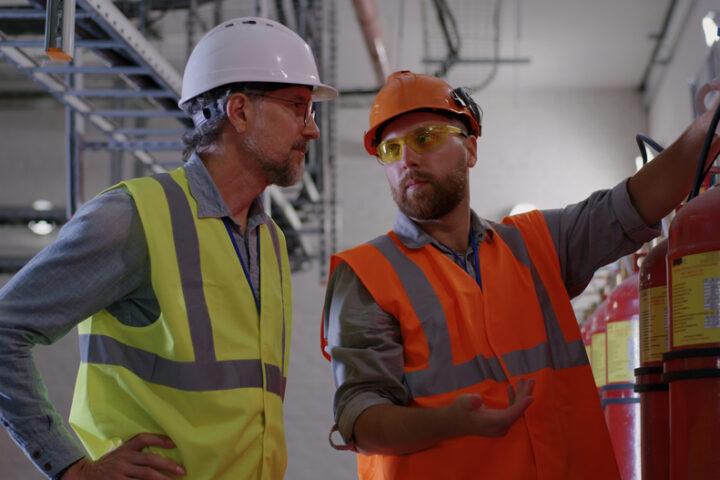Efficient workplace resource management is crucial for businesses in the Midlands, where competition encourages innovative and strategic resource use. Effective asset management boosts productivity and drives substantial cost savings, enabling a focus on growth and enhancing employee satisfaction. With the right tools and practices, businesses can improve operations, laying a foundation for long-term success.
Understanding Corporate Asset Management
Workplace asset management includes the processes and technologies for overseeing and maintaining physical and digital resources within an organisation. This practice enhances business efficiency by ensuring that all assets, from IT equipment to office supplies, are tracked, utilised effectively, and maintained properly.
Efficient asset management can lead to noticeable productivity gains. Businesses minimise downtime and reduce operational costs by systematically tracking and managing resources. Key areas include IT assets such as computers and software and physical resources like furniture and equipment. Properly organising and understanding these resources supports smoother operations and helps foster a motivated workforce.
Essential Tools for Workplace Resource Management
Various tools are vital for effective workplace resource management. Digital asset tracking solutions enable organisations to monitor resources in real-time, making it easier to identify underutilised assets or spot maintenance needs before they become issues. These tools improve tracking and help minimise resource wastage, an important element in maintaining profitability.
Real-time monitoring offers significant advantages. Systems that provide instant updates on asset conditions or availability enable teams to make quick, informed decisions. This timely information ensures optimal resource use, allowing organisations to promptly address challenges or seize opportunities, thus enhancing overall efficiency.
Additionally, integrating analytics into these tools offers valuable insights into usage patterns, supporting smarter future investments and resource allocation.
Optimising Digital Workspaces for Enhanced Efficiency
Optimising digital workspaces is essential for modern organisations. Tools for managing digital assets help keep documents organised and easily accessible. Cloud storage solutions and document management systems allow employees to quickly find what they need, reducing frustration and minimising downtime.
Accessibility plays a key role in digital workspace functionality. Ensuring files are in accessible formats allows all employees to access the information they need to perform effectively. This commitment to accessibility promotes an inclusive environment, contributing to higher employee satisfaction and retention. A user-friendly interface also streamlines workflows, helping employees navigate digital resources efficiently and boosting productivity.
Investing in training for employees to maximise the tools available in these digital workspaces is equally important. Regular workshops equip staff to use features effectively, encouraging a culture of continuous improvement. Gathering feedback on digital tools enables ongoing enhancements, ensuring the workspace evolves with users’ needs. These strategies increase operational efficiency and foster a motivated workforce that thrives in a well-structured digital environment.
Best Practices for Streamlining Resources in the Midlands Workplace
A proactive approach is essential to implementing effective asset management practices. Regular audits help maintain accuracy in resource tracking, enabling businesses to avoid unnecessary expenses and ensure effective resource use. Routine inventory and asset condition reviews allow for better insight and optimisation, especially when they involve cross-departmental collaboration to identify areas for improvement.
Providing employee training on asset management is critical, as staff should understand how to use available tools and the importance of maintaining resources. Investing in training enhances employee engagement and promotes a culture of responsibility regarding resource management. Additionally, encouraging employee feedback can help refine training programs and address any practical challenges they encounter.
For businesses in the Midlands, these practices offer specific advantages, including substantial cost savings and better compliance with regional regulations. Organisations strengthen their competitive position in the local economy by cultivating a workplace that values efficient resource management. This approach helps workplaces operate more effectively and contributes positively to the economic health of the wider community.
Staying Compliant: Accessibility and Inclusivity in Resource Management
Creating an inclusive workplace complements effective resource management. Ensuring all employees have access to necessary resources upholds ethical standards and boosts productivity and morale. Integrating accessibility features into management systems enables every team member to contribute fully, regardless of ability.
Enhancing accessibility may involve using software that supports diverse user needs or arranging physical resources to accommodate all employees. Meeting accessibility standards demonstrates a commitment to inclusivity and reflects an organisational culture that values diversity.
Focusing on accessibility and inclusivity in resource management can improve employee performance and satisfaction, significantly strengthening the organisation. For businesses in the Midlands, prioritising these elements enhances workplace culture and operational efficiency.
Investing in robust asset management practices is essential as organisations adapt to changing work environments. This preparation helps companies navigate future challenges while remaining agile. By prioritising effective resource management, businesses unlock potential and create an environment where every employee has the tools to succeed. Ultimately, this dedication to efficiency, accessibility, and inclusivity enhances productivity and fosters a positive, motivating workplace culture.







